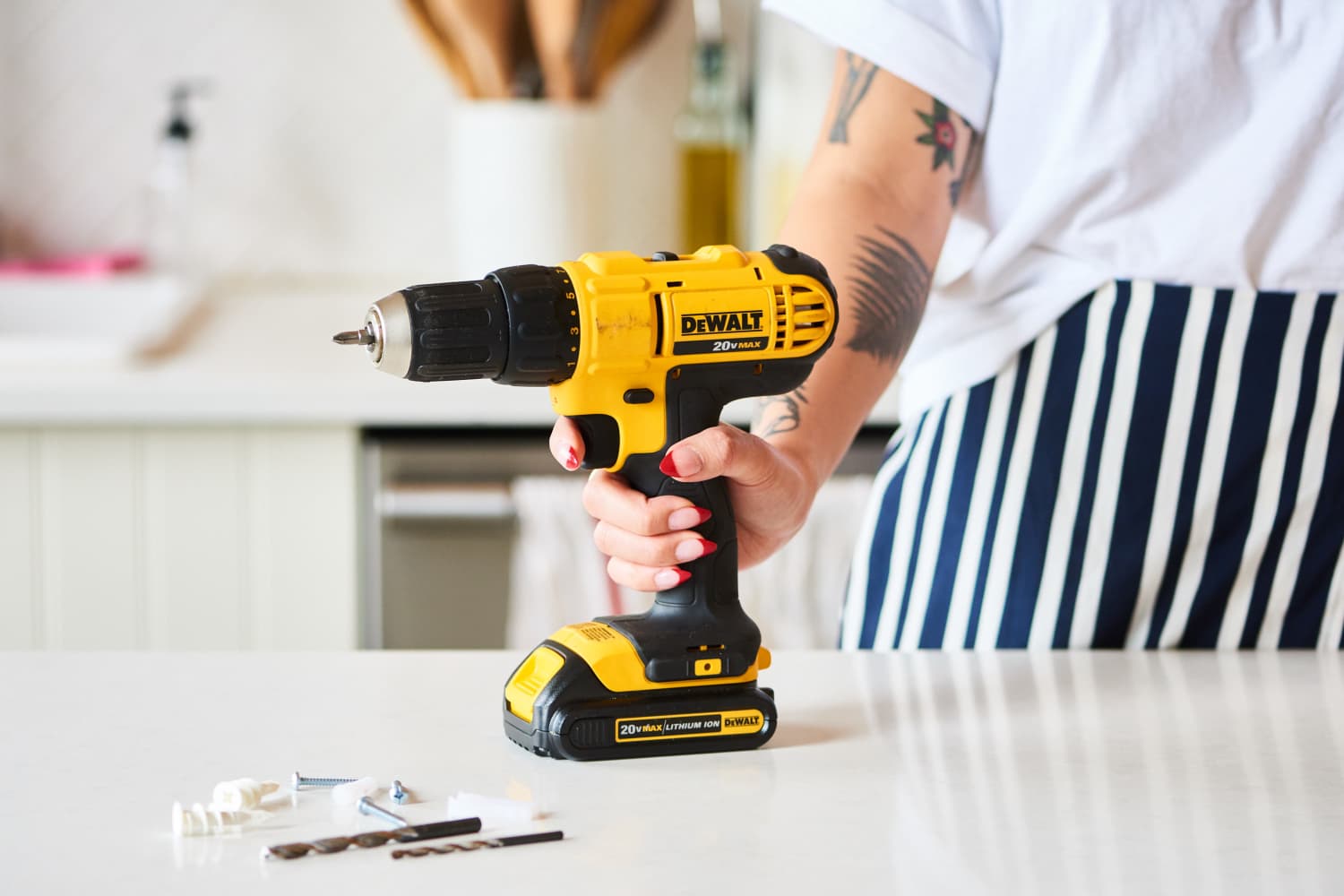We independently select these products—if you buy from one of our links, we may earn a commission.
This year, I’ve finally gotten comfortable using my power drill. Honestly, it’s really empowering once you know what you’re doing. I highly recommend it.
When, like me, you’re a beginner in the power drill universe, there are a lot of pieces to navigate (at least, compared to a hammer and nail!). There’s the drill, the battery, the screws, the anchors, and the drill bits. It can seem a bit overwhelming at the start.
One thing that left me scratching my head: If you’re doing a project that requires pre-drilling (such as hanging shelves), how do you know what size drill bit to use for your pilot hole?
Thankfully, a pro stepped in to help guide me. Eli Donahue, a carpenter at Stand and Build in New York, showed me how simple it is to determine which drill bit to use for your project.
Let’s say you have your shelves ready to hang, the appropriate screws, and you’re drilling into a stud, so no anchors are needed. If you know the size of the screw, you can locate the size of the drill bit by looking at the opposite end from the sharp point of the bit. It’s likely engraved there.
But if you don’t know the size of your screw, how do you know which drill bit to use? 1/8? 1/16? 5/32? Donahue has an easy way.
How to Decide What Drill Bit to Use
Here’s what the pro says: You can actually just eyeball it (carefully).
Donahue says you simply hold the drill bit up directly in front of the screw. “There’s the central column of the screw, and then there are the teeth of the screw,” Donahue says. “You want to pick a drill bit that’s the size of the central column, not the spiral.”
So when you’re holding your drill bit in front of the screw, if you can see the central column as well as the teeth, the bit is likely too small, so try a size up.
If you can’t see the teeth or spirals of the screw when you hold the drill bit in front of it, the bit is too large, so size down.
If you’re holding the drill bit in front of the screw and you can see the spiral, but not the central column, congratulations! You have the right drill bit size for this screw.
Note that if you’re not drilling directly into a stud, you’ll likely need to use an anchor for your project.
How to Determine the Size of Your Drill Bit for an Anchor
Donahue says the same method applies here.
If you’re using an anchor, he says to hold the drill bit up to make sure it’s the same size as the anchor minus the flange (the part at the end of the screw that sticks out from the wall).
“You want a drill bit that’s big enough to drill a hole in the wall, and easy to push the anchor in with your thumb,” Donahue explains. “You don’t want to have to force it in there. The drill bit should be the same size as the body of the anchor you’re using.”
What to Do if You Pre-Drill a Hole That’s Too Small
“Just step it up a size,” says Donahue. Choose the next bigger bit, then re-drill in the same spot. He says drilling a hole that’s too small is definitely the easier problem to fix, as opposed to fixing a hole that’s too big.
What to Do if You Pre-Drill a Hole That’s Too Big
“If it’s too big, then you have to buy a little spackling, seal it up, and go somewhere new,” Donahue says. In other words: Err on the side of too small.
While there are other options for fixing too-big holes if you’re a more advanced carpenter, he advises the easiest thing to do is to let it go, fill the too-big hole and move on. And don’t be too hard on yourself.
“Spackling is not that expensive!” says Donahue. You can pick some up from your local hardware store or on Amazon for less than $6.
How Many Drill Bits You Need as a Beginner
“For most things, you’re not going to need too many drill bits because you’re not going to need that much precision,” Donahue explains. “If you’re 1/16 inch too large or small, it’s usually not going to be too big of a deal if you’re hanging a shelf.”
In other words, save your money on the 230-piece drill bit set if you’re just doing some basic around-the-house DIYs.
So take a deep breath, hold up your drill bit in front of your screw or anchor to determine the size needed, and get started on your next project with the confidence of a pro.











